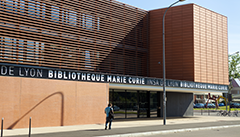
Sciences & Société
Soutenance de thèse : Shusong HUANG
Blood velocity reconstruction with contrast enhanced X-ray CT
Doctorant : Shusong HUANG
Laboratoire INSA : Creatis
Ecole doctorale : ED160 EEA
In this work, we aim to focus on blood flow reconstruction using the Computed Tomography (CT) technique. This non-destructive and non-invasive technique is broadly used in non-medical and medical clinical applications for the human body and brain. X- rays and Computed Tomography have been a breakthrough in the medical field to visualize the tissues and organs of a patient. However, in the past two decades, there are few research works concentrating on in vivo blood velocity measurement with X-ray CT. Blood flow velocity reconstruction with contrast enhanced X-ray CT is a complex inverse problem. The acquisition of 2D CT projections perpendicular to the major flow propagation direction is considered for the reconstruction of blood flow, with a tracer injected into the vessel. In order to solve the inverse problem of contrast-enhanced CT reconstruction of vascular blood flow, a function is minimized with a data term taken into account the projections coupled with a partial differential equation (PDE) describing the transport of the tracer used as a constraint. The PDE models the propagation of the contrast agent with a convection term depending on a flow velocity field.
The objectives of this work are blood velocity components reconstruction with X-ray CT with accelerated convergence, reduced calculation cost, and reduced radiation dose. To accomplish these objectives, the adjoint method is initially considered for solving the tomographic inverse problem with a constraint based on a PDE. Additionally, to accelerate convergence, the proper orthogonal decomposition (POD) method combined with the adjoint method is proposed in this work. Finally, the new Proper Orthogonal Decomposition-Deep Learning (POD-DL) approach for solving the considered inverse problem is investigated to reduce effectively the computation costs in our work. The effectiveness of proposed approaches for blood flow reconstruction is demonstrated by employing the blood velocity reconstruction in a simulation vessel.
Información adicional
-
Amphithéâtre Emilie du Châtelet (Bibliothèque Marie Curie) - Villeurbanne

